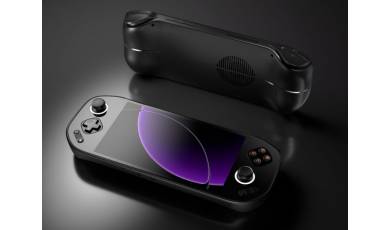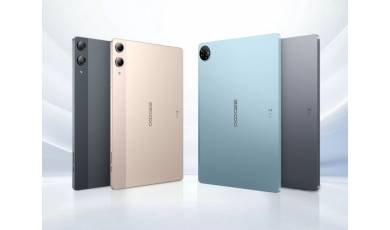Flash firmware on Xiaomi Redmi K60E
Mobiles >> Xiaomi >> Xiaomi Redmi K60E| Specifications | Reviews | Secret codes |
| Unlock phone | Root phone |
| Backup | Flash Firmware | Screenshot |
| Bypass Xiaomi Account Verification |
How to flash Xiaomi Redmi K60E?
Why reinstall the firmware?
Errors constantly appear in the Android OS.
Some applications do not open, reinstalling which does not lead to a positive result.
Many programs from the Play Market do not work.
The phone restarts by itself for no reason.
The phone started to work slowly.
You are not satisfied with the possibilities of the stock firmware.
Where can I find the firmware?
On the website of your phone manufacturer.
On sites where developers post custom or official OS.
What should be done before installing the firmware?
Create a backup copy of user data and transfer it to your computer.
Insert your SD card into your phone. An SD card is needed to write firmware to it.
Determine your smartphone model.
Fully charge your device.
Download archive with Firmware. Place it on the SD card.
Installing TWRP Recovery
Install the Official TWRP App from the Play Store on your phone. And run this application.
When you start the application for the first time, you must agree to install the firmware, as well as agree to grant the application Superuser rights and click the 'OK' button.
On the next screen, you need to select the 'TWRP FLASH' item and give the application root-rights.
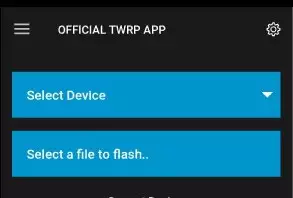
On the main screen of the application, click 'Select Device', and select your phone model.
After selecting a phone, the application will direct the user to a web page to download the modified recovery environment image file. Download the proposed *.img file.
After downloading the image file, return to the main screen of the Official TWRP App and press the 'Select a file to flash' button. Select the file downloaded in the previous step.
Click the 'FLASH TO RECOVERY' button and confirm your choice, click 'OK' in the question window.
When the message 'Flash Completed Succsessfuly!' appears. Click 'OK'. The TWRP installation procedure is now complete.
Write the firmware to the SD card. Using a PC or laptop card reader.
Insert a SD memory card into the phone.
To reboot into recovery, you need to enter the menu accessible by pressing the button with three stripes in the upper left corner of the main screen of the application. Select 'Reboot' and then click on the 'REBOOT RECOVERY' button.
Firmware via TWRP
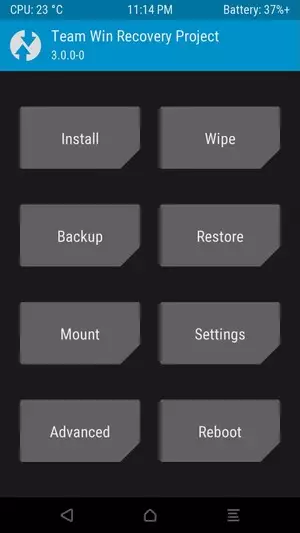
Before flashing, you need to delete all user data from the phone, this will avoid errors in the software, as well as other problems. Press 'WIPE' on the home screen.
You can start flashing. Click the 'Install' button.
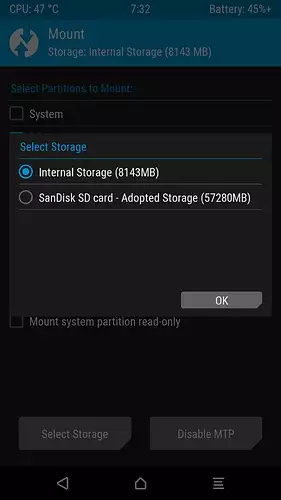
The file selection screen is displayed. At the very top is the 'Storage' button, which allows you to switch between types of memory.
Select the location where the files were copied. Press the 'OK' button.
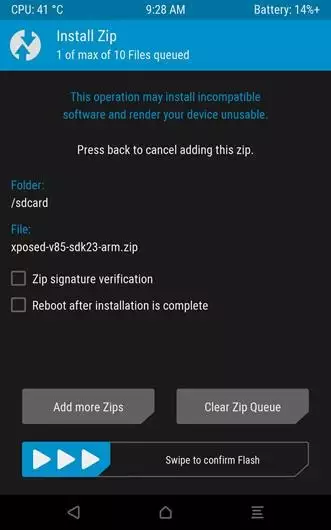
Select the firmware file and click on it. A screen opens with a warning about possible negative consequences, as well as the item 'Zip signature verification'. This item should be checked by placing a cross in the check-box, which will avoid using damaged files when writing to the phone's memory sections.
The procedure for flashing the phone will begin, this is accompanied by the appearance of inscriptions in the log field and the movement of the progress bar.
After the firmware installation procedure is completed, the 'Successful' message appears on the screen.
Summary: Smart Phone OS: Android v12; Custom UI: MIUI; CPU: Octa core (3.1 GHz, Single core, Cortex A78 3 GHz, Tri core, Cortex A78 2 GHz, Quad core, Cortex A55); Chipset: MediaTek Dimensity 8200 MT6896Z; Architecture: 64 bit; GPU: Mali-G610 MC6; RAM: 8 GB; RAM Type: LPDDR5; Screen Size: 6.67 inches (16.94 cm); Screen Resolution: 1440 x 3200 pixels; Aspect Ratio: 20:9; Display Type: OLED; Display dots per inch: 526 ppi; Touch Screen: Yes, Capacitive Touchscreen, Multi-touch; Refresh Rate: 120 Hz; Brightness: 1200 nits; HDR 10 / HDR support: Yes, HDR 10; Bezel-less display: Yes with punch-hole display; Screen Protection: Corning Gorilla Glass, Glass Victus; Internal Memory: 128 GB; Expandable ...
Comments, questions and answers on the flash firmware Xiaomi Redmi K60E
Ask a question about Xiaomi Redmi K60E

